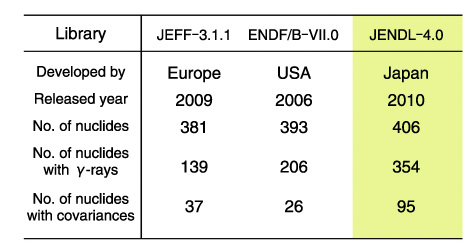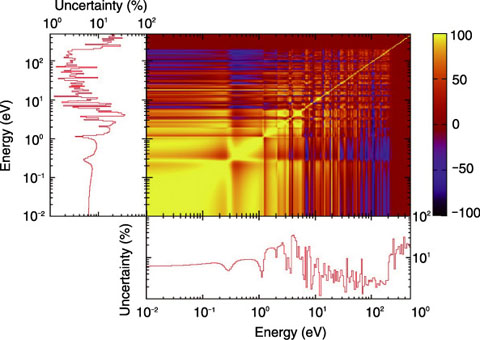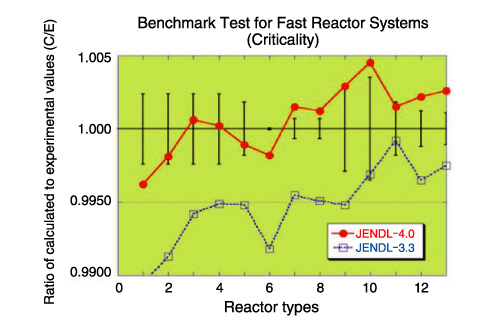Table 8-1 Comparison among evaluated nuclear data libraries


Fig.8-3 Example of covariance matrices (above)

Fig.8-4 Example of criticality analysis for fast reactor systems
A new evaluated nuclear data library, JENDL-4.0, has been completed and released. The JENDL-4.0 library contains basic neutron reaction data, and is used in various kinds of nuclear science and technology fields.
The library contains the data of 406 nuclides. Following the release of the JENDL-3.3 library in 2002, users’needs and requests were incorporated into the new library. In particular, the data of minor actinides and fission products, which play an important role in high burnup reactors and disposal of nuclear waste, have been emphasized. Highly requested additional covariance data are also given in the new library, more than in the previous library. Table 8-1 shows a comparison among the main evaluated libraries. The JENDL-4.0 library surpasses other libraries not only in coverage of the nuclides it contains, but also in terms of covariance data and γ-ray production data.
An example of covariance data is shown in Fig.8-3. The figure shows the correlations for the 235U fission cross section. The diagonal part indicates the uncertainties in the cross section itself and the off-diagonal part represents the correlation between energy regions. It shows the degree of the effect of a cross-section change in one energy region on the cross-section of another energy region.
Many benchmark tests have been performed to confirm the performance of JENDL-4.0. Fig.8-4 shows the results of tests for fast reactor systems. The ratios of calculated neutron multiplication factors to measured ones are given. A value of 1.0 means good performance. The results with JENDL-4.0 show improved performance.
The JENDL-4.0 library is an open library and can be freely used. The library can be downloaded from the website of the JAEA nuclear data center (https://wwwndc.jaea.go.jp/index.html) and other international websites like the IAEA NDS, and OECD/NEA Data Bank. The JENDL-4.0 library is thus expected to be used by researchers and engineers all over the world.
<Previous: 8 Nuclear Science and Engineering Research | Next: 8-2 >